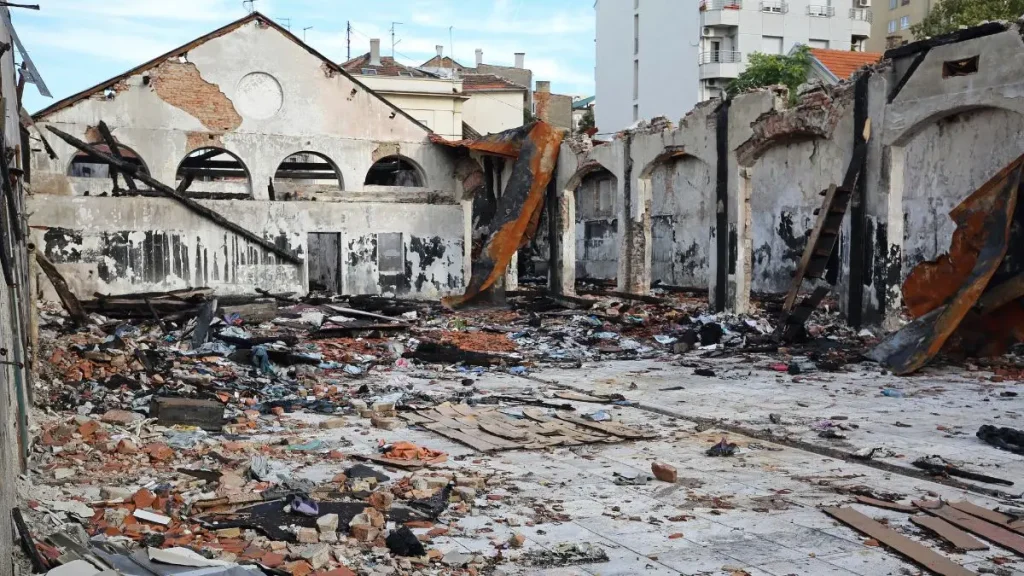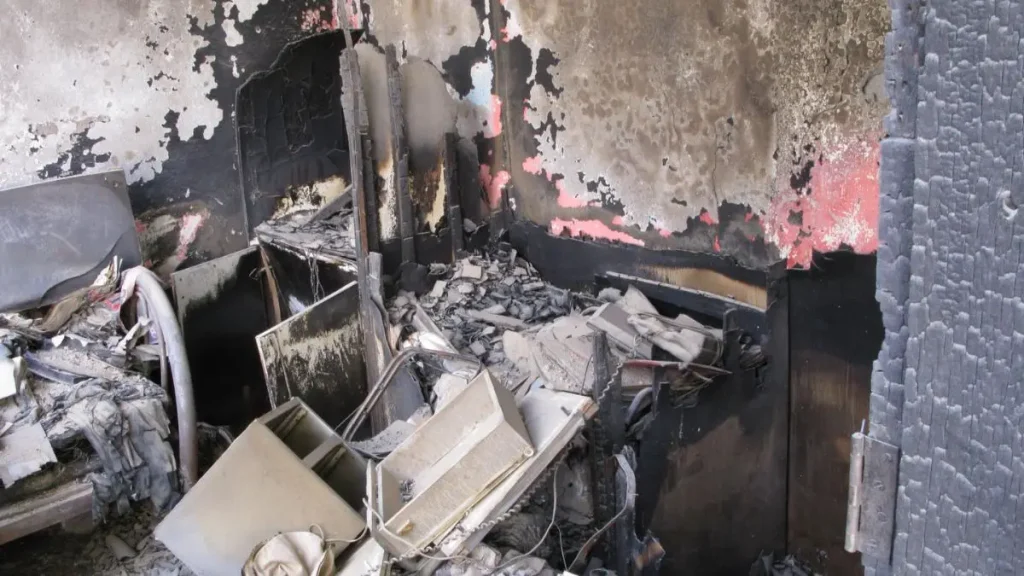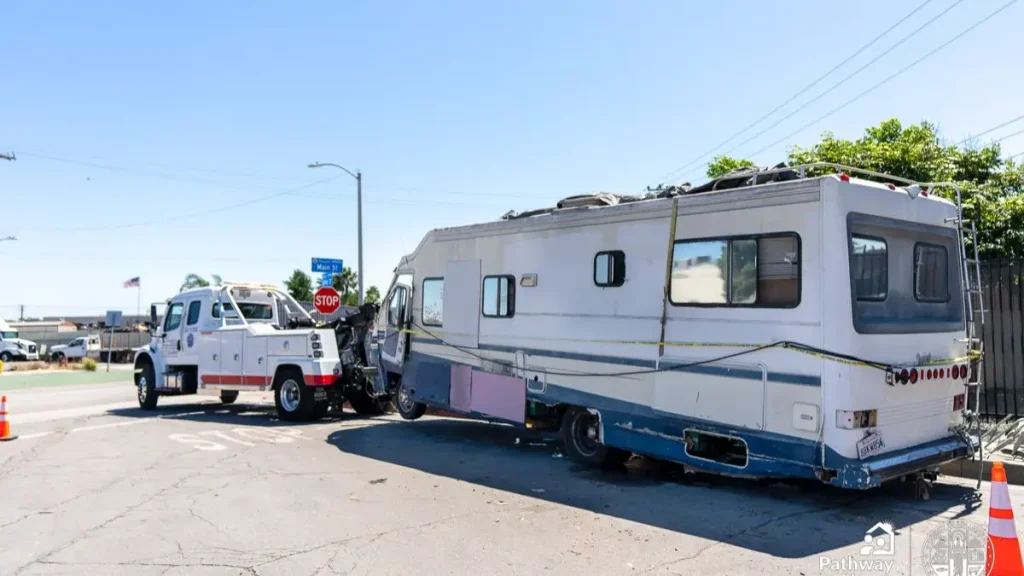Plainfield House Engulfed in Flames After Lightning During Intense Storm
I’ve lived through my share of summer storms, but what hit Plainfield last Friday wasn’t just another thunderstorm—it was personal for an entire neighborhood. Around 5 PM, a lightning bolt came crashing down on a quiet street off Mayfair Avenue and set a home’s roof on fire.
The house went up in flames fast. A neighbor named Julia saw it burst into what she described as “pretty big flames” on the left side of the roof. Another nearby resident, Diane Hope, said she and her family were sitting in their garage when they saw the lightning strike hit. “I jumped up three feet,” she told reporters. And when they looked toward the house, smoke was already rising through the bushes.
Thankfully, no one was home at the time. No injuries, no lives lost. But the home didn’t make it. Fire crews got the flames under control, but the top of the structure—and a tree nearby—were left scorched and broken.
If you live in New Jersey or anywhere else that’s been dealing with these violent summer storms, this isn’t something you can ignore.
Have you checked how close those tall trees are to your roof lately? Let me know what steps you’re taking—or not taking—to storm-proof your home.
Lightning Strike Witnessed by Neighbors: “I Jumped Up Three Feet”
You don’t expect to see a lightning bolt actually hit something. But that’s exactly what happened here.
According to ABC 7 NY, Diane Hope, a neighbor, was sitting in her garage when the lightning hit. She told reporters she saw it with her own eyes—“We actually saw the bolt come down, and we heard it—I mean I jumped up three feet.” That’s how loud and close it felt.
What followed was chaos. Smoke started rising behind the bushes. Julia, another neighbor, said the roof lit up fast—“pretty big flames” on the left side of the house. It wasn’t just a strike; it was an instant fire.
One thing I’ve learned about fires started by lightning—they don’t give you a second chance. There’s no warning, no smell, no flickering wires like in electrical fires. Just boom… and it’s burning.
If you’ve ever thought, “Lightning won’t hit my house,” I get it. Most of us feel that way—until someone on our street becomes the headline.
No One Home, But House Severely Damaged
Here’s the one piece of good news: no one was inside that house. No injuries. No lives lost.
But let me be clear—just because no one was hurt doesn’t mean the damage wasn’t brutal. The top of the house was torn up. The fire ripped through the roof and a nearby tree got hit, too. Firefighters got it under control, but not before the structure was left unlivable.
I’ve seen homes survive worse storms and still stand strong. But a direct lightning hit? That’s different. It’s sudden, violent, and leaves behind long-term trauma—even if the family escapes.
And if you’ve ever dealt with property loss, you know the emotional toll doesn’t end when the flames go out. Insurance paperwork, temporary housing, and the reality of losing personal space—it all adds up.
So yeah, it’s lucky no one was inside. But calling this a “minor” event would be missing the point.
Sadly, not every lightning-related fire ends without tragedy—a recent incident near Plant City, Florida led to a fatal outcome, where the homeowner didn’t survive the blaze.
Plainfield’s Month of Chaos: From Floods to Fires

This wasn’t an isolated incident—and that’s what really worries me.
Just two weeks ago, a stalled storm flooded parts of Plainfield so badly that storage containers were literally sailing down the streets. A car got swept into a creek, and two people died.
Two weeks before that, in the same area, a tree and live wires came down on a car. Again, two lives lost. Now this—lightning igniting a house.
If you live here or even nearby, you’ve probably felt it too. These aren’t freak accidents anymore. It’s starting to feel like Mother Nature has her sights set on Plainfield.
I won’t sugarcoat it: when storms start stacking up like this—week after week—you’ve got to stop thinking short-term. This is about patterns, not coincidences.
And if you’re just hoping your home or street doesn’t make the news next, that’s not a plan.
If you’re someone who likes staying updated on real-time fire incidents, rescue responses, or storm alerts across the U.S., there’s a WhatsApp channel that quietly curates these without noise or spam. It’s been a reliable scroll for me during this storm season.
Nature vs Infrastructure: Are Our Trees and Homes Ready?
Let me ask you something—how old are the trees around your home? Do you really know?
Because this isn’t just about lightning. It’s about the things we ignore until they fall on our house.
Take what happened in Union, NJ, the same weekend as the Plainfield fire. A massive tree collapsed during the storm—barely missing someone’s home. That homeowner, Seth Anane, told reporters he had been warning the town for five years that the tree was rotting. No one listened—until it fell.
I’ve heard that story too many times. Weak trees. Outdated roofing. Gutters overflowing during downpours. All the signs are there, but we wait until something breaks… or burns.
So if you’re sitting there thinking, “We should probably get that tree looked at,” don’t wait. This summer’s storms aren’t playing nice. And neither is time.
Just last week, a fire in Wisconsin forced an entire family out of their home—proving again how overlooked risks can turn lives upside down in minutes.
How Lightning Sparks Fires — And What You Can Do to Stay Safe
Let’s talk facts.
Lightning causes around 22,600 fires in the U.S. each year, according to the National Fire Protection Association. Most of them happen in the summer. And many—just like this one in Plainfield—start from the roof or nearby trees.
Here’s what usually happens:
Lightning hits a tall object (like a tree), and the electric charge travels into the house through branches, gutters, or even underground lines. It can blow out your wiring, spark insulation, or even ignite wooden beams in the attic.
I’m not trying to scare you—I just want you to be prepared.
Here’s what I suggest you check today:
- Do you have surge protectors or a whole-house lightning arrestor?
- Is there a tall tree within 10 feet of your house?
- Are your smoke detectors working—and in every room?
- Do you have a fire extinguisher near your kitchen and garage?
These steps aren’t expensive. What’s expensive is pretending storms won’t find you.
Sometimes, the worst outcomes aren’t even about lightning—like the tragic house fire in Oklahoma City where a woman lost her life. Fire prevention needs to go beyond just weather events.
Lessons from the Storm: Why NJ Must Prepare Differently

Here’s something I’ve learned after covering dozens of fires, floods, and storm disasters—it’s never just about nature. It’s also about how prepared (or ignored) a place is.
Look at Plainfield right now. You’ve got residents warning the town for years about dangerous trees. You’ve got weak drainage systems that can’t handle heavy rain. You’ve got families with no access to basic emergency resources.
And then people act surprised when something goes wrong.
This isn’t about blame—it’s about responsibility. Cities like Plainfield need to stop reacting to disaster and start planning for it. That means budget for tree maintenance. That means better communication with residents. That means accepting that extreme weather is no longer rare.
If local leaders are reading this, I hope they listen. Because from what I’ve seen, Plainfield isn’t just unlucky—it’s underprepared.
What This Fire Reveals About New Jersey’s Storm Season?
This one fire might not seem like a big deal to someone skimming the headlines. But if you’ve been watching what’s happening across New Jersey, you know better.
Floods, lightning, fallen trees, deadly accidents—it’s all connected. This is storm season in a new climate reality. And if we don’t treat it like a long-term threat, we’re just waiting for the next emergency to show up at our door.
So here’s my question to you:
What have you done to storm-proof your home lately? Have you checked the trees? Cleaned the gutters? Talked to your kids about what to do in a fire?
It’s easy to scroll past another fire story. Harder to imagine it happening to your house. But if this summer’s shown us anything, it’s that none of us are off the hook.
Let me know in the comments—what’s the one thing you still need to fix before the next storm hits?
For more real stories like this and expert tips on how to protect your home, visit our full Home Incidents section.
Disclaimer: This article is based on publicly available reports and expert data at the time of writing. It is intended for informational purposes only and should not replace professional safety or emergency advice. Always follow local guidelines during extreme weather events.


